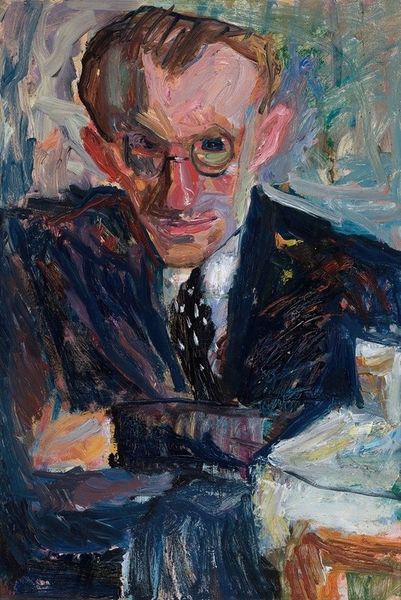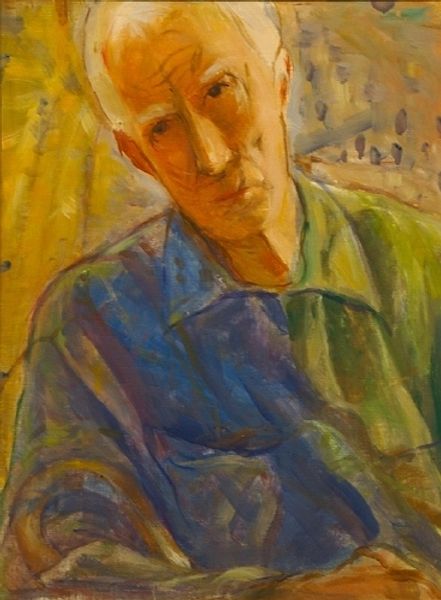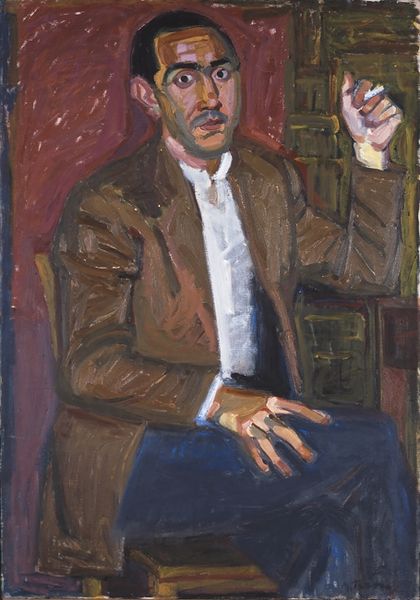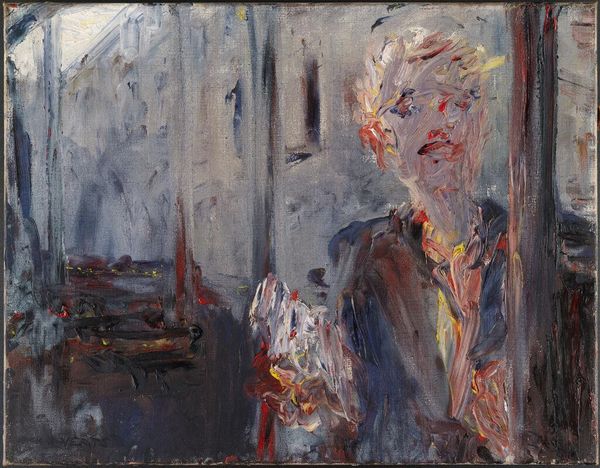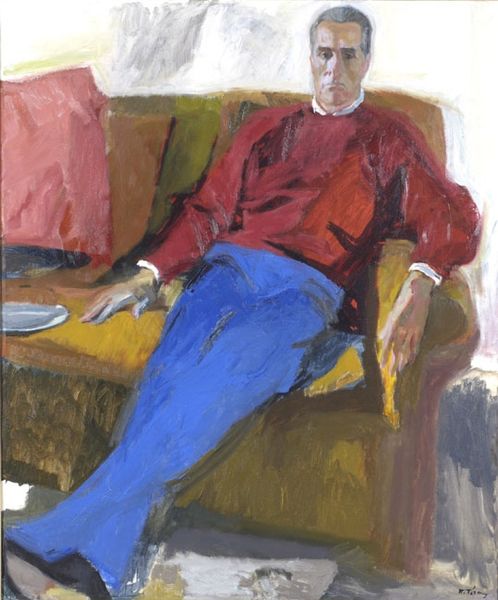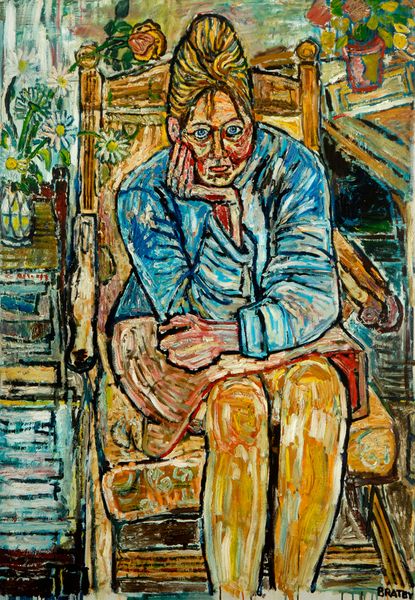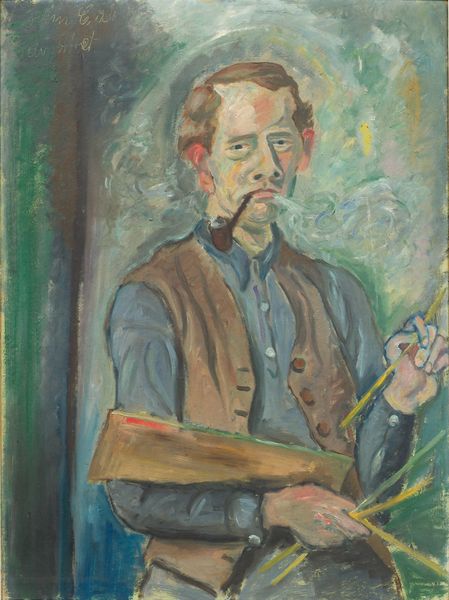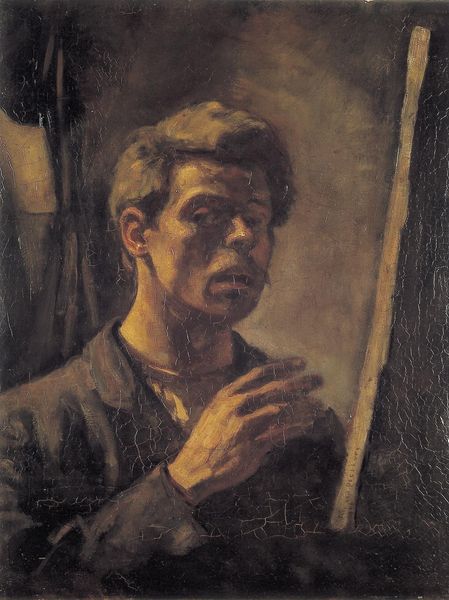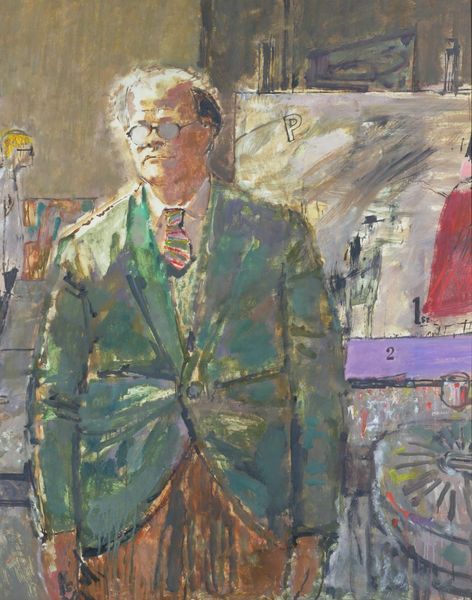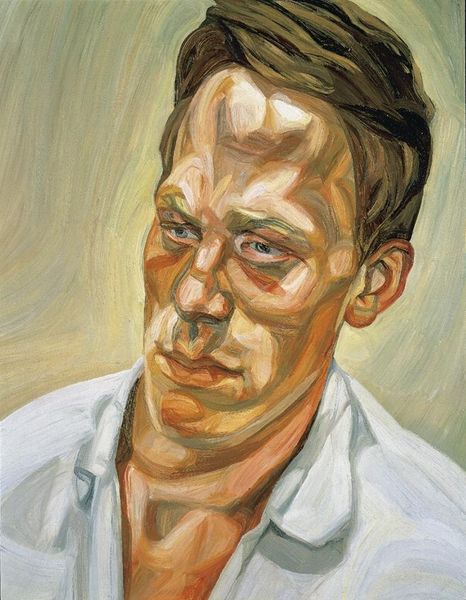
oil-paint
#
portrait
#
self-portrait
#
oil-paint
#
oil painting
#
genre-painting
#
portrait art
#
modernism
#
realism
Dimensions: 36 1/4 x 28 3/4 in. (92.08 x 73.03 cm) (canvas)46 x 38 x 2 1/2 in. (116.84 x 96.52 x 6.35 cm) (outer frame)
Copyright: No Known Copyright
Editor: So, here we have J. Jerome Hill’s “Self Portrait,” created in 1961 using oil paint. I find the materiality of the brushstrokes really striking. How do you read the choices Hill made in constructing this image, specifically focusing on materials and process? Curator: I think this piece is a fascinating study in the artist's relationship to labor and self-representation. Look at the visible brushstrokes, the impasto in areas like the face and the shirt. These choices speak volumes about the labor involved. We see not just a portrait, but evidence of the making, of the *work* of creating a self-image. The visible oil paint transforms this from simply a painting to a testament of labor, process, and materiality, and these considerations challenge established concepts regarding fine art and labor. What about the setting, the artist's studio? Editor: Right, it feels very honest. He’s presenting himself not just as an artist, but as someone actively engaged in the act of creation. It is interesting you say this disrupts notions about fine art... Can you tell me more about how context plays into that idea? Curator: Consider the time this was created. The 1960s saw increased dialogue around the role of labor in society, along with the challenges against traditional boundaries of production. Here we see an emphasis on manual production: oil paint, brushstrokes, evidence of physical labor – not the traditional polished portrait that diminishes allusions to its creation. Hill’s emphasis seems to be on production and the active work of an artist rather than art's commodity and artfulness. Editor: That reframes the whole piece. It is not simply "who I am" but "how I came to be, brushstroke by brushstroke". Curator: Exactly. It’s a challenge to the viewer to consider the value and visibility of artistic labor, which isn't necessarily considered, thus shifting ideas about portraiture from commodity to active expression. What do you take away now? Editor: Thinking about this as documentation of process and materiality completely changes how I view portraits. Curator: Indeed, focusing on the material making changes how we perceive value within this "Self Portrait".
Comments
No comments
Be the first to comment and join the conversation on the ultimate creative platform.
